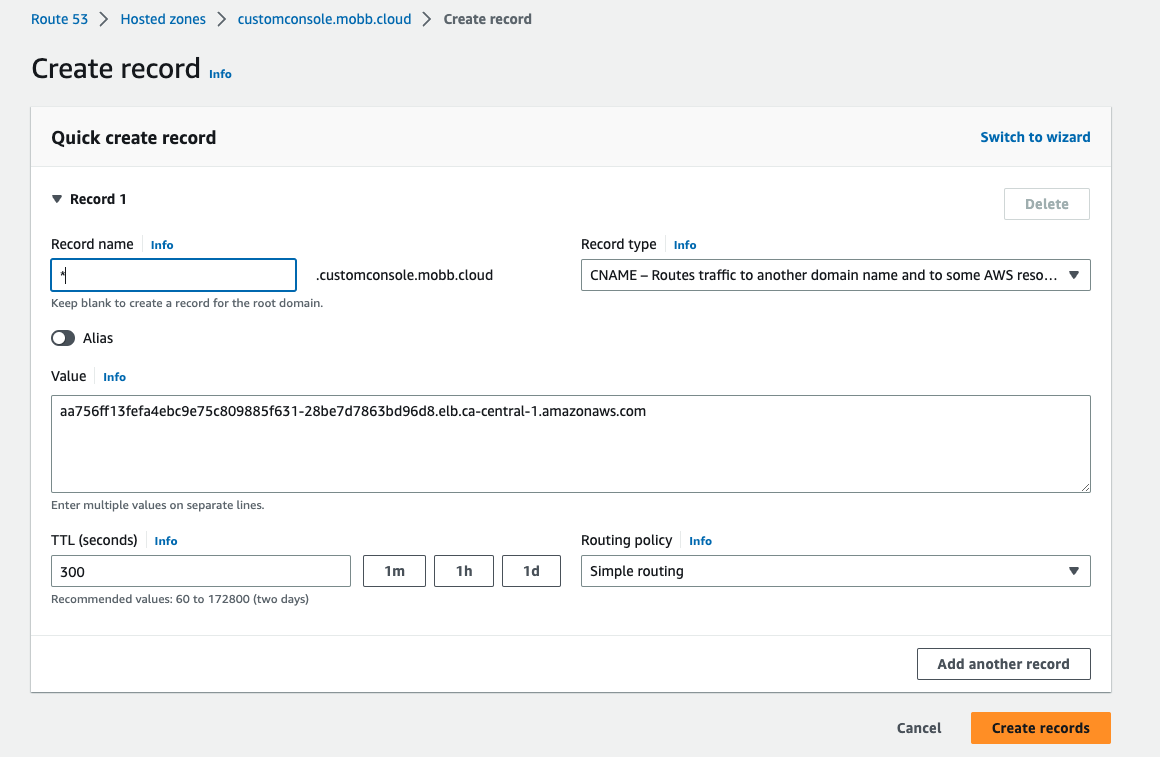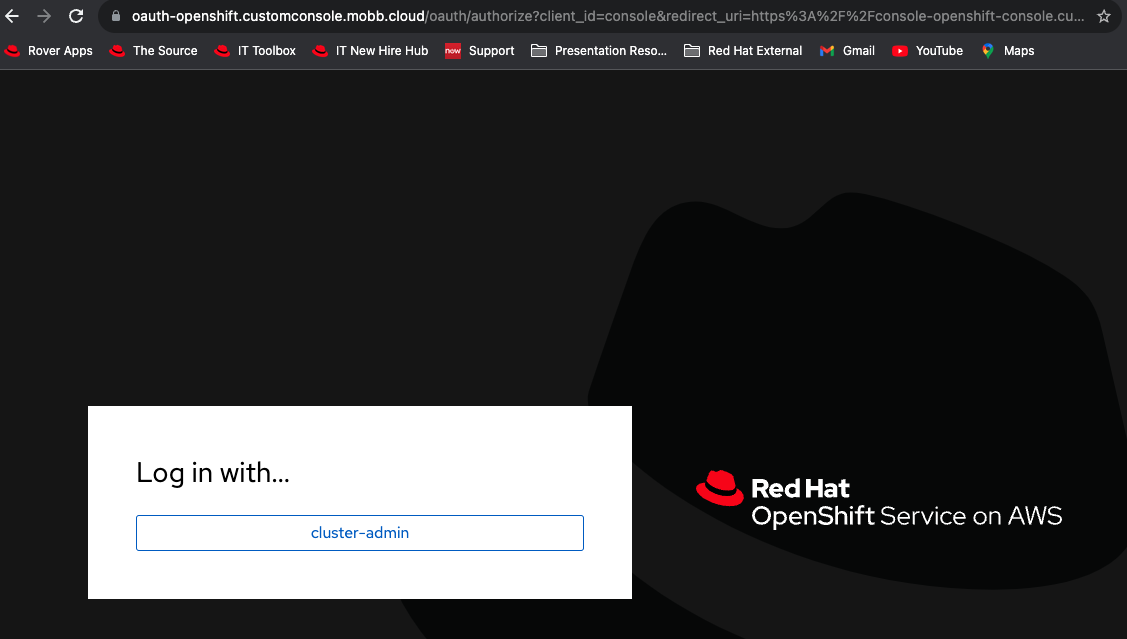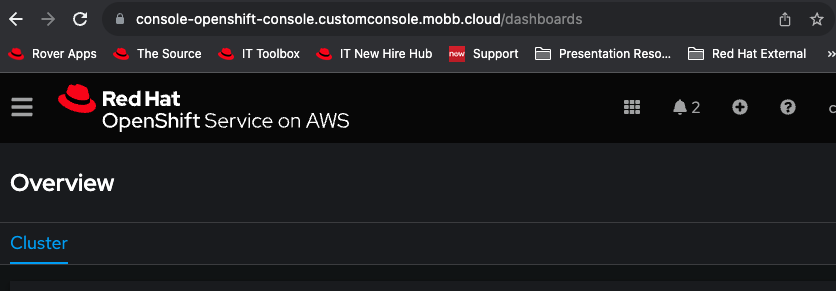Customizing the console URL in ROSA
This content is authored by Red Hat experts, but has not yet been tested on every supported configuration.
Starting with ROSA 4.14.X, it is possible to modify the hostname and TLS certificate of component Routes post-install. These are the OAuth, Console, and Downloads routes. For example, the default ROSA console uses the built-in domain https://console-openshift-console.apps.<cluster_name>.<random>.p1.openshiftapps.com. You can now specify a custom domain, for example test.example.com, and the ROSA console will be available at a URL such as https://console-openshift-console.test.example.com. This guide will walk you through how to customize the console url for a ROSA Classic cluster (not tested on ROSA HCP yet).
Prerequisites
- A Red Hat OpenShift for AWS (ROSA) cluster 4.14.0 or higher
- Cluster admin privileges (required to be able to modify cluster ingress)
- Route53 Hosted Zone
- A custom domain
- Three individual component route certificates (Console, Oauth and Downloads)
rosaclioccli
Deploy
Set up Environment
Set your email and domain
export EMAIL=<YOUR-EMAIL> export DOMAIN=<YOUR-DOMAIN>Set remaining environment variables
export SCRATCH_DIR=/tmp/scratch mkdir -p $SCRATCH_DIR
Individual Component Route Certificates
Create TLS Key Pair for individual component routes
NOTE: you can use cert-manager if preferred > https://cloud.redhat.com/experts/rosa/dynamic-certificates/
NOTE: this is required because the component routes require their own individual certs
Skip this step if you already have key pairs for the individual component routes. You will use those key pairs to create as secrets in the next step instead
for CERT in oauth downloads console; do mkdir -p $SCRATCH_DIR/$CERT certbot certonly --manual \ --preferred-challenges=dns \ --email $EMAIL \ --server https://acme-v02.api.letsencrypt.org/directory \ --agree-tos \ --config-dir "$SCRATCH_DIR/$CERT/config" \ --work-dir "$SCRATCH_DIR/$CERT/work" \ --logs-dir "$SCRATCH_DIR/$CERT/logs" \ -d "$CERT.$DOMAIN" doneCreate TLS secrets for your custom domain in the openshift-config namespace
for CERT in oauth downloads console; do CERTS=/tmp/scratch/$CERT/config/live/$DOMAIN oc create secret tls $CERT-cert --cert=$CERTS/fullchain. pem --key=$CERTS/privkey.pem -n openshift-config done
Create wildcard DNS record and point to DNS entry of Ingress controller
Retrieve the cluster’s default ingress id
rosa list ingress -c <cluster_name>Take note of the default ingress ID.
Retrieve the ROSA default ingress load balancer DNS name (can use the AWS console or run the command below).
oc get services -n openshift-ingress | grep defaultor

Add a wildcard DNS record in your custom domain Route53 Hosted Zone to CNAME to the router-default

Update each component route to include the custom domain you are choosing, as well as each of the certificates that were provisioned above. It should be noted that the
tlsSecretRefrefers to the component certs created as secrets and they cannot be shared amongst one another:rosa edit ingress -c <cluster-id> <default-ingress-id> \ --component-routes="oauth: hostname=oauth.$DOMAIN;tlsSecretRef=oauth-cert,\ downloads: hostname=downloads.$DOMAIN;tlsSecretRef=downloads-cert,\ console: hostname=console.$DOMAIN;tlsSecretRef=console-cert"
Test
Retrieve ROSA console URL
oc whoami --show-consoleNavigate to your console domain in the browser to access the login page. If logged into the console already, logout before logging back in again.
The Oauth componentRoute is also accessible on the custom domain

Login to the console

